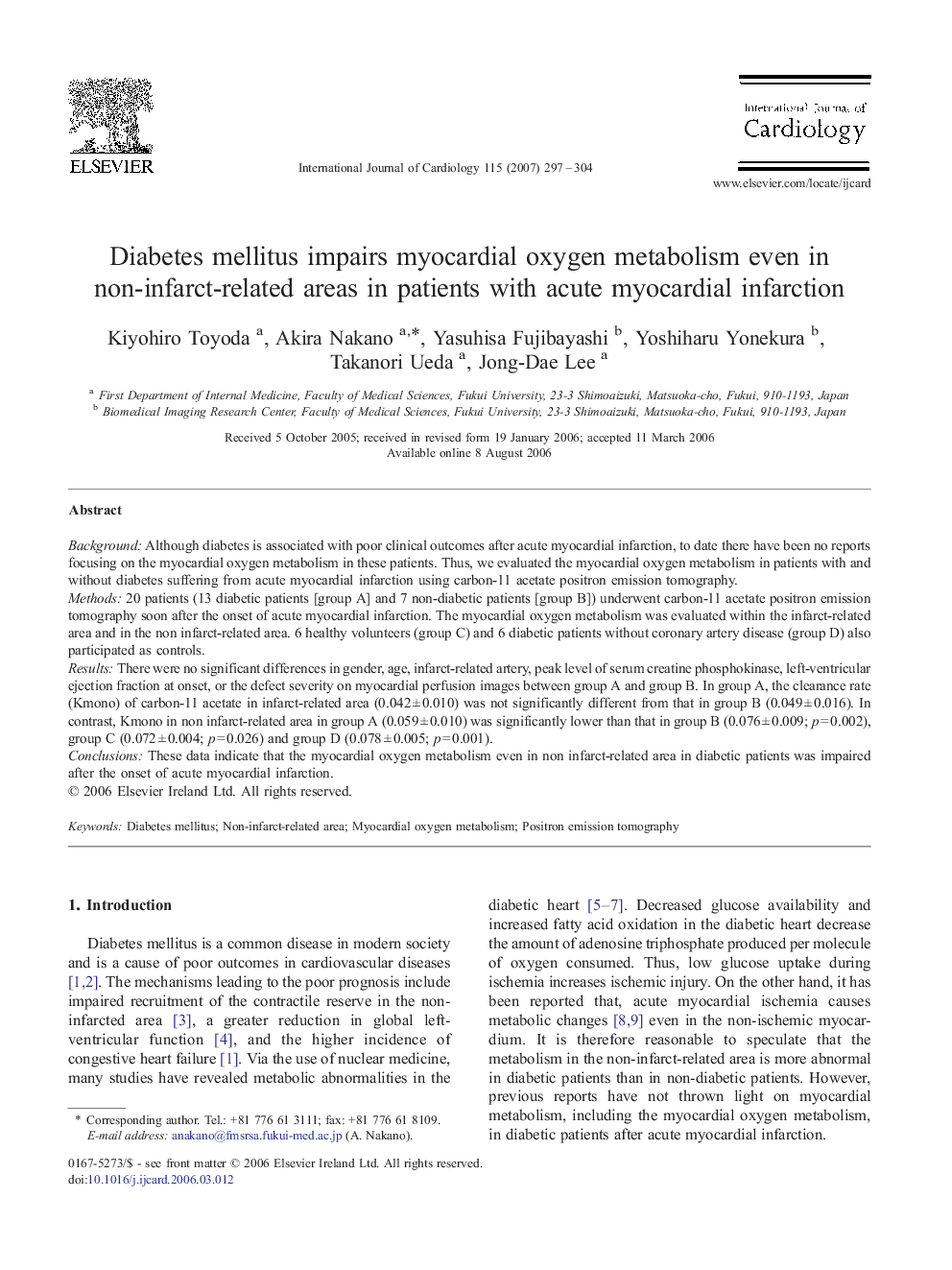| Article ID | Journal | Published Year | Pages | File Type |
|---|---|---|---|---|
| 2935354 | International Journal of Cardiology | 2007 | 8 Pages |
BackgroundAlthough diabetes is associated with poor clinical outcomes after acute myocardial infarction, to date there have been no reports focusing on the myocardial oxygen metabolism in these patients. Thus, we evaluated the myocardial oxygen metabolism in patients with and without diabetes suffering from acute myocardial infarction using carbon-11 acetate positron emission tomography.Methods20 patients (13 diabetic patients [group A] and 7 non-diabetic patients [group B]) underwent carbon-11 acetate positron emission tomography soon after the onset of acute myocardial infarction. The myocardial oxygen metabolism was evaluated within the infarct-related area and in the non infarct-related area. 6 healthy volunteers (group C) and 6 diabetic patients without coronary artery disease (group D) also participated as controls.ResultsThere were no significant differences in gender, age, infarct-related artery, peak level of serum creatine phosphokinase, left-ventricular ejection fraction at onset, or the defect severity on myocardial perfusion images between group A and group B. In group A, the clearance rate (Kmono) of carbon-11 acetate in infarct-related area (0.042 ± 0.010) was not significantly different from that in group B (0.049 ± 0.016). In contrast, Kmono in non infarct-related area in group A (0.059 ± 0.010) was significantly lower than that in group B (0.076 ± 0.009; p = 0.002), group C (0.072 ± 0.004; p = 0.026) and group D (0.078 ± 0.005; p = 0.001).ConclusionsThese data indicate that the myocardial oxygen metabolism even in non infarct-related area in diabetic patients was impaired after the onset of acute myocardial infarction.
